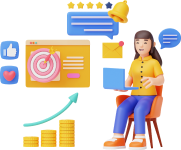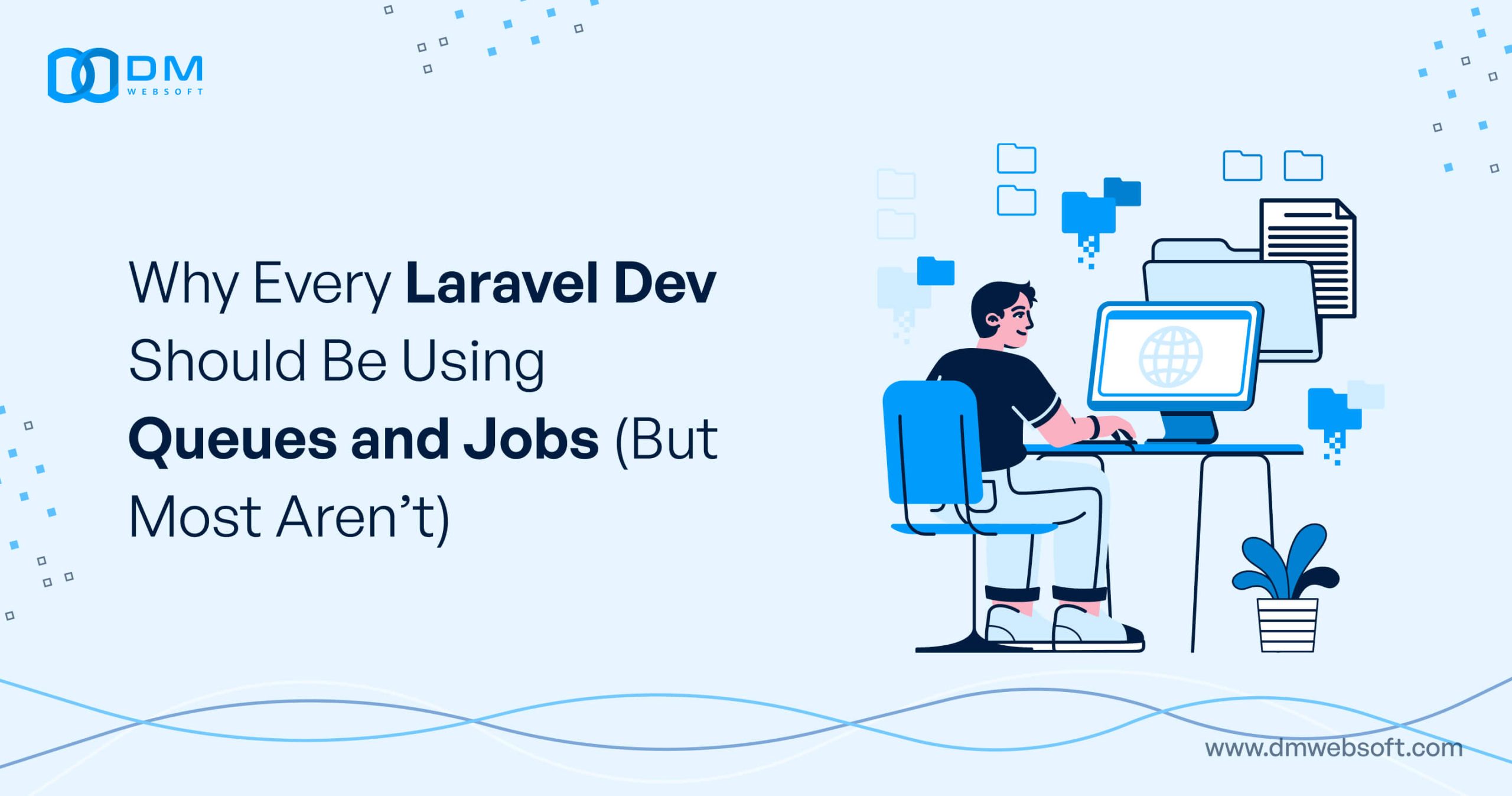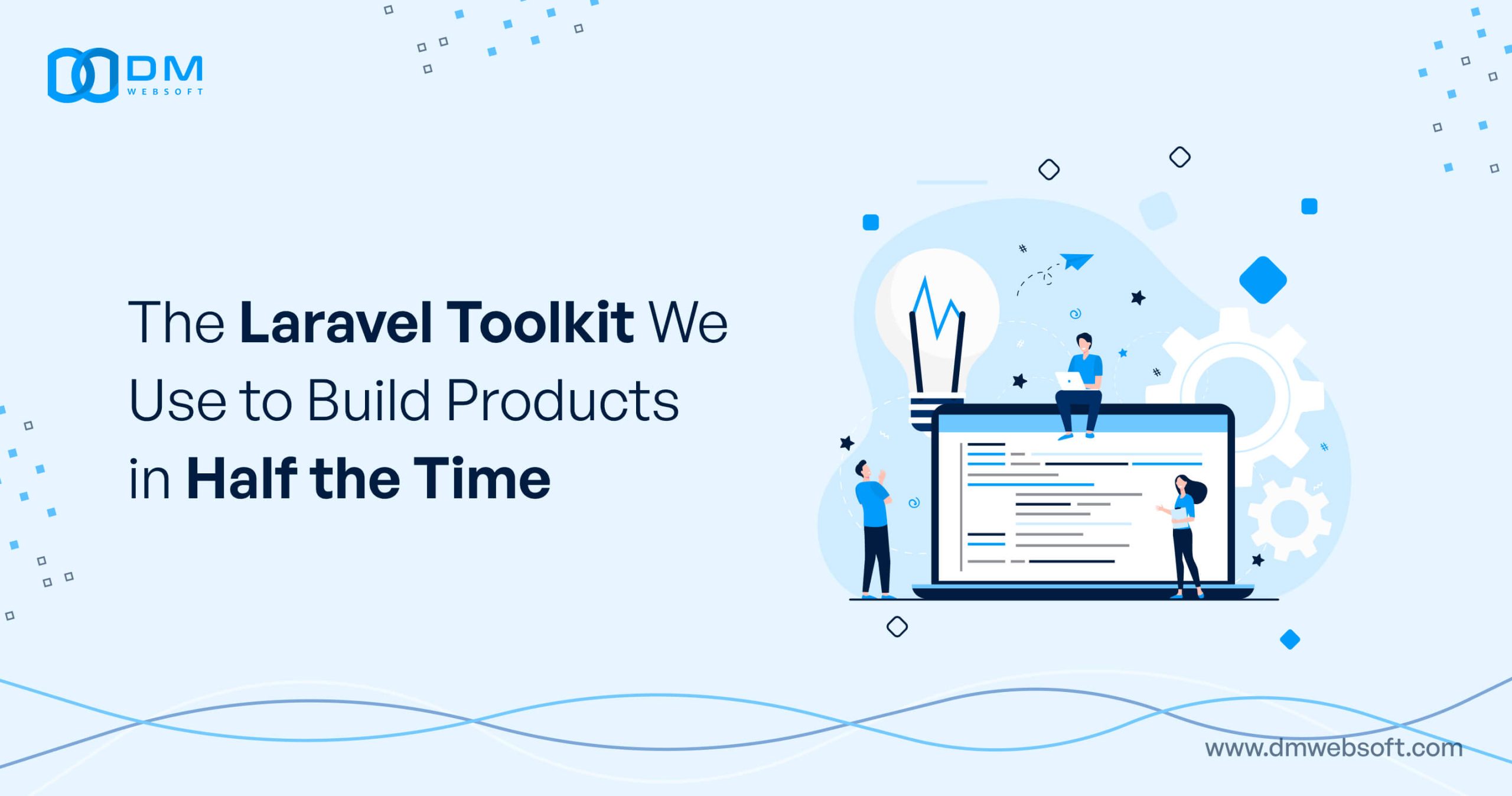DM WebSoft LLP exceeded our expectations! Their seasoned team of experts delivered a website that perfectly captures our brand essence. Their 15+ years of experience truly shine through in their exceptional web development skills.
The Evolution of Programming Languages: What’s Next

TABLE OF CONTENT
Get in Touch
Introduction
Programming languages have been the wejson tapestry of technological evolution, intricately crafting the digital world as we know it. From the genesis of simple computational codes to the sophisticated languages of the current day, this journey reflects mankind’s tireless pursuit for innovation. Standing on the precipice of so many new digital landscapes, it behooves us to look behind with an eye to really see what is in front of us. This journey in the changes and evolutionary patterns of the programming languages helps to enlighten not only our technological past but also lights up the way for the future, where companies like DM WebSoft LLP are at the cutting edge of tapping into the power of programming to offer revolutionary solutions.
It is an entry into the evolutionary door of programming languages, a dig into the very fiber of what is termed digital innovation: from basic computation systems to further down the path of today’s advanced coding languages. The review gives a summary of how programming languages have changed their roles to influence the technologies of the world. And, as you march with us in this journey of retrospection, also look ahead at what possibilities are there for the future in programming, where companies like DM WebSoft LLP are taking leadership to utilize these languages for leading in state-of-the-art technological solutions.
The Historical Journey of Programming Languages

The history of programming languages is one of those interesting stories of human creativity, always trying to simplify the complexity in human problems in dealing with the machine and improve their dealings with the machine. And, like languages themselves, this journey has been punctuated by periods of rapid innovation, each new one building from the successes and lessons of its predecessors.
In fact, from the dawn of the computer science age, programming raised its ugly head with powerful and assembly languages. Early programmers developed the binary code for interfacing with the machine, which should definitely work but was anything other than efficient or particularly user-friendly. Other important milestones in the invention of the punch cards, which served as a tangible medium for the programming of the computers, but the process was still painfully slow and error-prone.
The 1950s decade became the beginning of a new era, as it was in the year 1954 that the first high-level programming language, Formula Translation (FORTRAN), was developed. Where FORTRAN was designed to do scientific calculations, it was a giant step forward with a kind of syntax somewhat readable for human beings and dramatically reducing the time it takes to program.
The success of FORTRAN became a pathway, so other languages like COBOL (Common Business-Oriented Language) followed to help provide syntax more like English for describing data processing. Over the years, programming languages have increased in number and sophistication. Languages like C, born in the 1970s, combined the efficiency of assembly language with the high-level abstractions needed for the development of complex software.
This was also the time with the coming of object-oriented programming, such as Smalltalk, which introduced the concept of objects in programming that encapsulates data and behavior into the creation of reusable components.
C++ was introduced in the 1980s as a C language extension with object-oriented capabilities and has since become one of the most enduringly popular languages for system and software application development. In the same period, scripting languages like Perl came into existence and enabled quick prototyping and text manipulation facilities through which quick development activities at the emerging web front became feasible. The 1990s and the first decade of the 2000s brought along languages designed for the Internet age, such as Java—meant to be portable across platforms—and PHP, which would later become almost synonymous with server-side web development.
By this time, Python had become so popular and readable in its execution that the language started climbing up and appealed to a diversity of programming tasks, from the web to scientific computing. We find today an array of languages, each fitted to domains and making up part of the rich tapestry of modern computing. JavaScript is among those few languages that have become inevitable for web development, whereas the new entrants like Swift, Kotlin are doing rounds for mobile application development.
This is some of the continued evolution, highlights—like the rise of such languages focusing on concurrency and safety, such as Go and Rust—in response to a changing technological landscape and multi-core processing and system reliability presenting increased challenges. On reflecting on this journey through history, one tends to really understand that programming languages are more than machine tools for instructions. They are a reflection of our ongoing quest for bridging the human-computer divide, encapsulating our aspirations, challenges, and the ever-evolving landscape of technology. With companies such as DM WebSoft LLP leading the march, thejson-file-creation2.json is the saga of programming languages done, or even close to done, just lying in wait for its next chapter.
Current Trends in Programming Languages
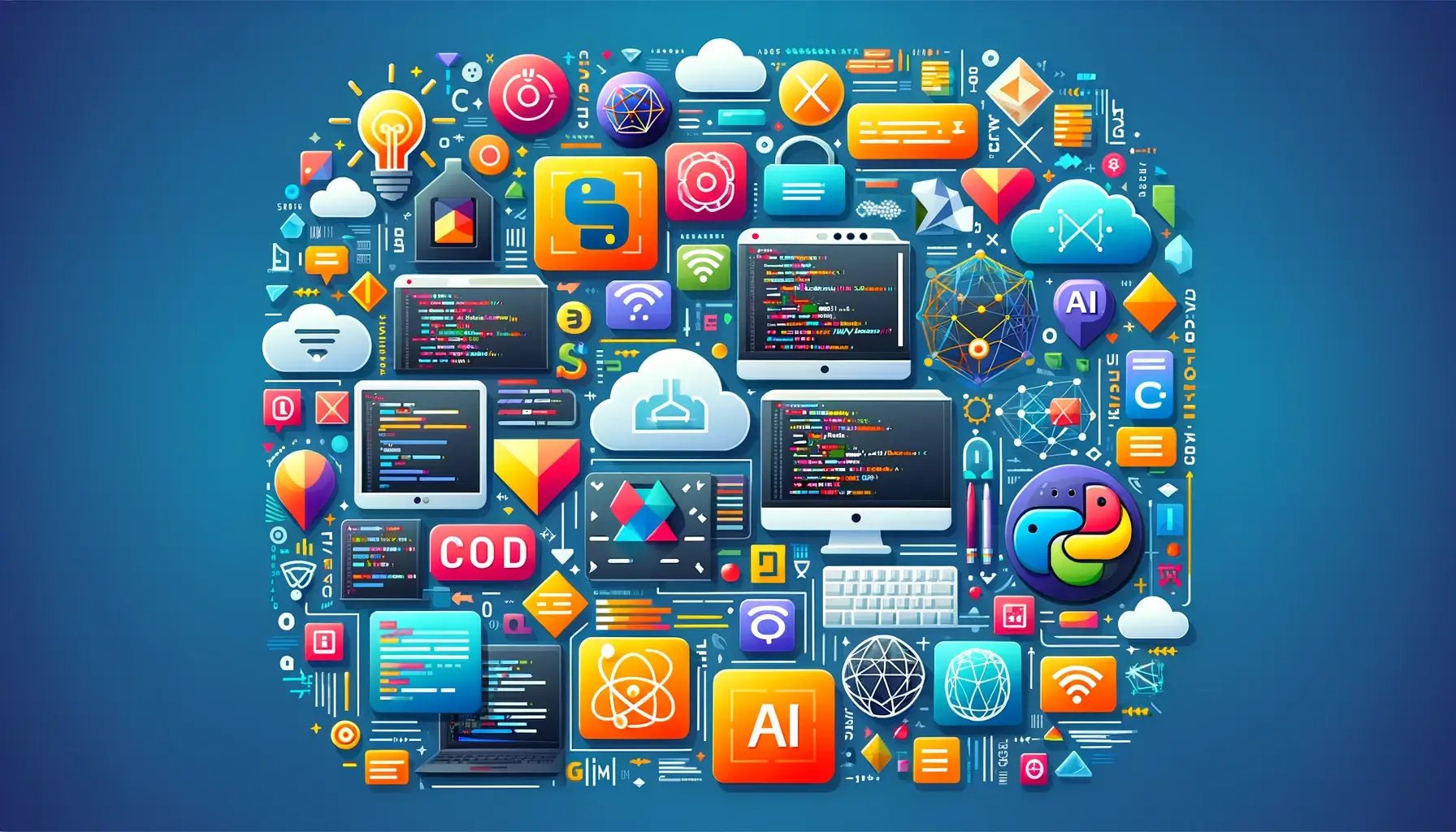
Last but not least, and most likely the reason for the popular use of JavaScript, is the programming language that is reinventing itself to meet the pressures of modern practices in development and new paradigms. A number of top trends influence the programming future today, reflecting a larger tendency within the tech industry to bring more efficient and secure processes of creating software to life.
- Emergence of Scripting and Interpreted Languages: Languages such as Python and JavaScript became the most preferred with the passage of time and are still dominating the world of programming for their flexibility and easy learning curve, along with a wide area of applications from web development to data science and automation.
- Clear syntax and powerful libraries: All of these have made Python a de facto standard language when it comes to data analysis, machine learning, and scientific computing. On the other hand, the modern framework—one should first of all mention React, Angular, and Vue.js—enables the use of this language to work with the most efficient way in the creation of dynamic web applications.
- Focus on Performance and Efficiency: Growing application complexity and their data needs, languages for a better performance: developer productivity ratio need to be developed. This would also be seen in languages such as Rust and Go, which allow memory safety and support concurrency, therefore making them fit for system-level programming, cloud services, and large-scale applications where performance and reliability mean everything.
- Cross-Platform Development: The interest in cross-platform development tools has given rise to the growing number of languages and frameworks that aim to make application development easier on several platforms. This has even seen Android developers in the mobile world adopt Kotlin because of its short syntax and easy interoperability with Java, making them open in cross-platform mobile development, coupled with Kotlin Multiplatform. Also, Dart with the Flutter framework is making it more efficient in building native-compiled applications for mobile, web, and desktop from the same codebase.
- Functional Programming Paradadigms: The importance of functional programming paradigms is increasing, really putting emphasis on immutability and stateless functions to bring the advantages in terms of predictability, testability, and thread safety. Languages like Ejson, Skala, and Hasker are at the forefront of such emergence, having their niche in applications that are strongly demanded in concurrency and fault tolerance, such as real-time communication platforms and financial systems.
- Focus on Developer Experience and Productivity: Developer Experience is becoming one of the most important issues in language and tool design. Modern languages are incorporating features like type inference, pattern matching, jsonSerde, etc., to make code more readable, easy to write, and maintain. This applies to the tooling landscape too, with more and more integrated development environments (IDEs) and code editors powered with features such as code completion, instant feedback, debugging features, among others, making development easier than ever before.
- Integration of Emerging Technologies: Programming languages are integrated with the latest advancements in the domains of artificial intelligence (AI), blockchain, and the Internet of Things (IoT), which are blooming and growing at present. Even languages like Solidity are being developed from scratch to have it specifically designed for the creation of smart contracts on blockchain platforms. With the coming in of libraries like TensorFlow and PyTorch, today Python stands as one of the leading languages in AI and machine learning.
So, from such dynamic environment, DM WebSoft LLP is leading with these trends and technologies to provide the required innovative software solutions in the changing world by businesses and consumers. It keeps DM WebSoft LLP services updated and in line with the prevailing trend of programming languages to ensure offering the clients with the best technology and possible expertise.
The Future of Programming Languages

It might also be interesting, and at the same time pretty complicated, to look into the future of programming languages with the technical crystal ball. Since computing is moving forward with constant innovations in leaps and bounds, programming languages are left far behind to revolutionize in order to fit new trends of digital evolution. Herein are some major developments; the prospects in regards to this future landscape shape the way we interact with technology and conceive software solutions.
- Quantum Computing Languages: The invention of quantum computing has indeed heralded a different way in the solution of problems that the classical type of computers has failed to provide. In time, the quantum hardware will be exposed to a new quantum programming language that precisely taps into the principles of quantum mechanics. These are the languages that would provide constructs to manipulate qubits, do quantum entanglement, and superposition, opening new frontiers in fields like cryptography, material science, and complex system simulation.
- Natural Language Programming (NLP): Advancements within AI and machine learning technologies are supposed to make the distinctions between human languages and codes blur more and more in the upcoming time, offering programming interfaces that are much more intuitive than those available in present times. In fact, natural language programming could democratize the development of software. If this were in the realm of possibility, well, then—ultimately, if people who aren’t programmers today could write out these commands and sort of convey the structure of a program in some kind of conversational language, that would be an order-of-magnitude difference in the barrier to entry.
- AI-Assisted Coding: AI and machine learning are expecting to take a bigger role in the process of programming as intelligent code assistants get more sophisticated. But those tools will do so much more through the power of auto-suggestion alone: they suggest automatic changes to the code and propose new ways of finding potential security vulnerabilities within the software. This kind of growth affects the productivity of the developers and can also contribute to the emergence of human-AI hybrid programming teams.
- Programming for distributed and decentralized systems: With the world moving towards more distributed and decentralized digital infrastructures, mainstreaming in this new world is programming for the distributed and decentralized systems. There will be languages and frameworks designed to simplify the development of decentralized applications (dApps) on blockchain platforms, and even optimal languages to build apps in distributed computing environments, like the edge computing network.
- Specialized Languages for Special Domains: There is the most likely possibility that, in the future, very many more specialized programming languages will come into view for very specialized domains or technologies. In the same way that GPU programming has its specialized languages—such as CUDA—there’s every chance we’ll see neuromorphic computing, bioinformatics, or whatever other weird and wonderful niches the relentless advance of technology has forced on us.
- Security and Relability: In this enhanced environment of cybersecurity threats, the future programming languages will take birth with an element of security and reliability. We could expect more resistant to common bugs languages, which adopted formal verification tools or encouraged programming practices leading to code that was more secure and resilient.
In such a highly dynamic landscape, companies like DM WebSoft LLP will continue to be at the forefront of the changes occurring today and would have been making them adopt and adapt to future trends in programming languages. DM WebSoft LLP tends to keep one step ahead of the curve all the time, as it ensures its solutions are up to par with the clients’ requirements or, rather, most probably, ahead of what the digital world requires in the future.
Next-Gen Programming Languages
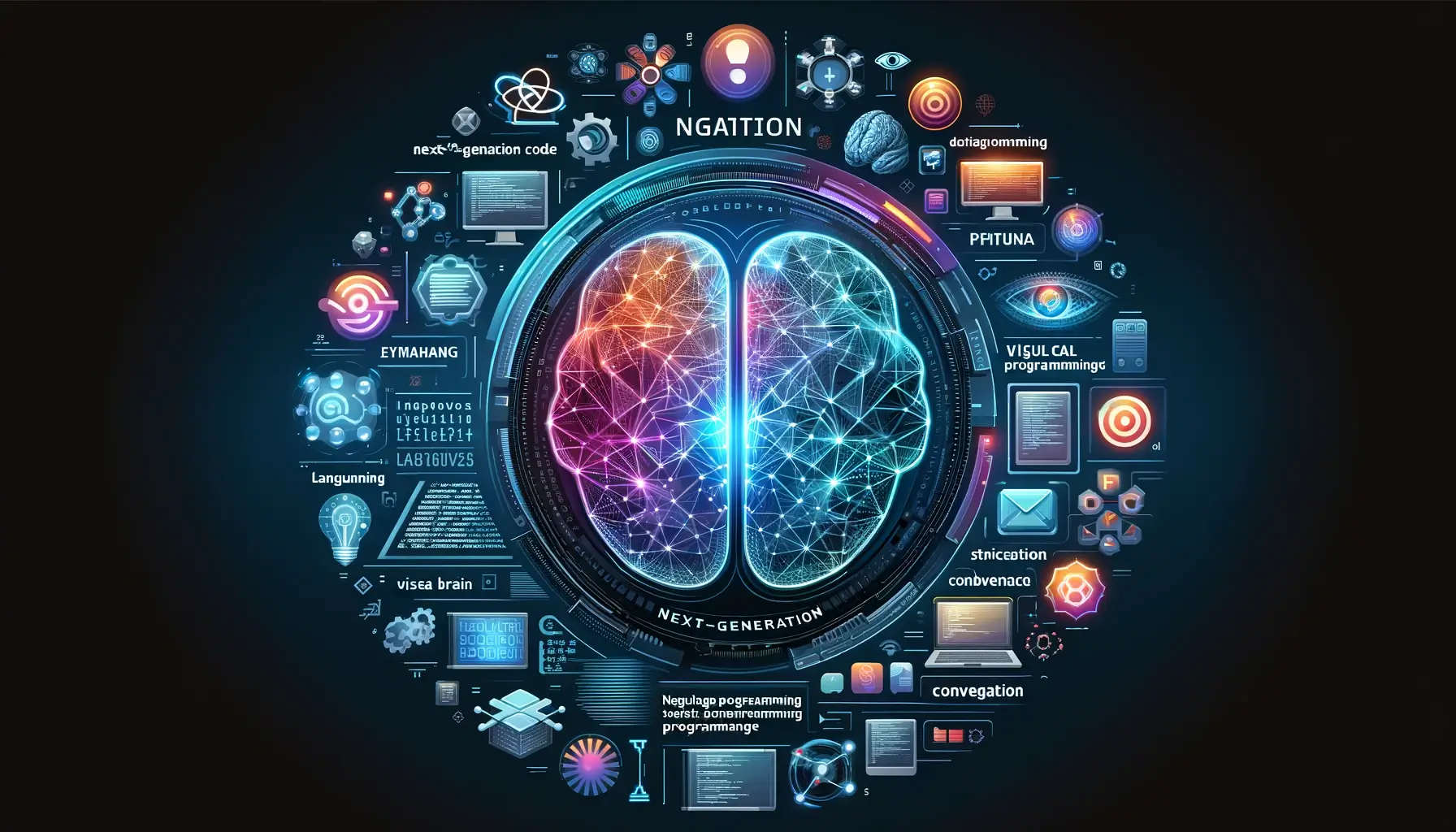
It is at the horizon of software development, and the next generation of programming languages is laying the groundwork for a new paradigm in how we conceive and think of interacting with technology. These languages, still in a nascent or theoretical stage, offer much promise for bringing in a radical change in programming provoked by the new requirements in computing, the advent of newer technologies, and the search for more intuitive, effective, and secure methodologies of software development.
- Languages Designed for Quantum Computing: This work yielded to the specific demands of quantum computing by providing birth to languages with an intuitive expression of quantum algorithms. Languages like Q# from Microsoft and Qiskit from IBM are leading this field and provide developers with the tools to access the potential power of quantum computers. It is a language that allows working with classical languages and provides the tools to create hybrid solutions with the power of quantum and classical computing.
- Low-Code and Visual Programming: The essence of effort to enable more people to code with less effort and in faster rates has been at the heart of the development of both low-code and visual programming platforms. These environments allow developers, even if they do not have technical knowledge, to design applications through graphical interfaces and in that way to reduce the time and complexity it usually takes in software development.
The next-gen visual programming languages are expected to be much more sophisticated, literally allowing one to build thejsons into complex applications without having to write reams of code.
- Domain-Specific Languages (DSLs): It will also open the door for next-gen language programming in a variety of DSLs, specializing in languages of this kind built for specific areas or problem domains (e.g., health, finance, or multimedia processing). These languages are designed so that better expressing the notions and operations of a domain in a more clear and precise manner, the development of specific applications should become more natural and, at the same time, not lose the possibilities of being offered to the greatest possible number of users.
- Languages Focused on Security and Formal Verification: As cybersecurity is one of the prime concerns, embedded security is expected to get seeped into the nucleus of the future programming languages. For example, the language Rust is focusing on features like memory safety; it’s just getting started. That is, we searched for languages with formal verification features: languages that enable developers to actually write mathematical proofs about the correctness and security of their code, hence massively reducing vulnerabilities and mistakes.
- Hybrid of Imperative and Declarative: Perhaps, in a decade or so, there will be a new language that is so powerful it can accommodate imperative, functional, and logical programming paradigms into it, finally bridging the chasm that now exists between them. In this regard, the purpose of this convergence would be enabling even more expressive power to the developer in choosing the most appropriate paradigm for the given task within one single cohesive language environment.
- Enhanced Use of AI and Machine Learning: Next-gen languages could probably ensure that AI and machine learning are used in a deeply fused format, so that the applications developed would be much more dynamic and intelligent. Some languages may come with, natively, models of machine learning, natural language processing, or interfaces that adapt to make the apps more interactive and user-responding.
With such advancements in the programming language, DM WebSoft LLP is all set to position in important ways to define the course of new-age technologies and the way innovations are carried out. With the adoption of next-gen programming languages, DM WebSoft LLP has been dealing with even more complex technological challenges and therefore brings to their clients the very latest in software engineering and their edge to this rapidly growing and changing digital world.
Real-Life Case Studies
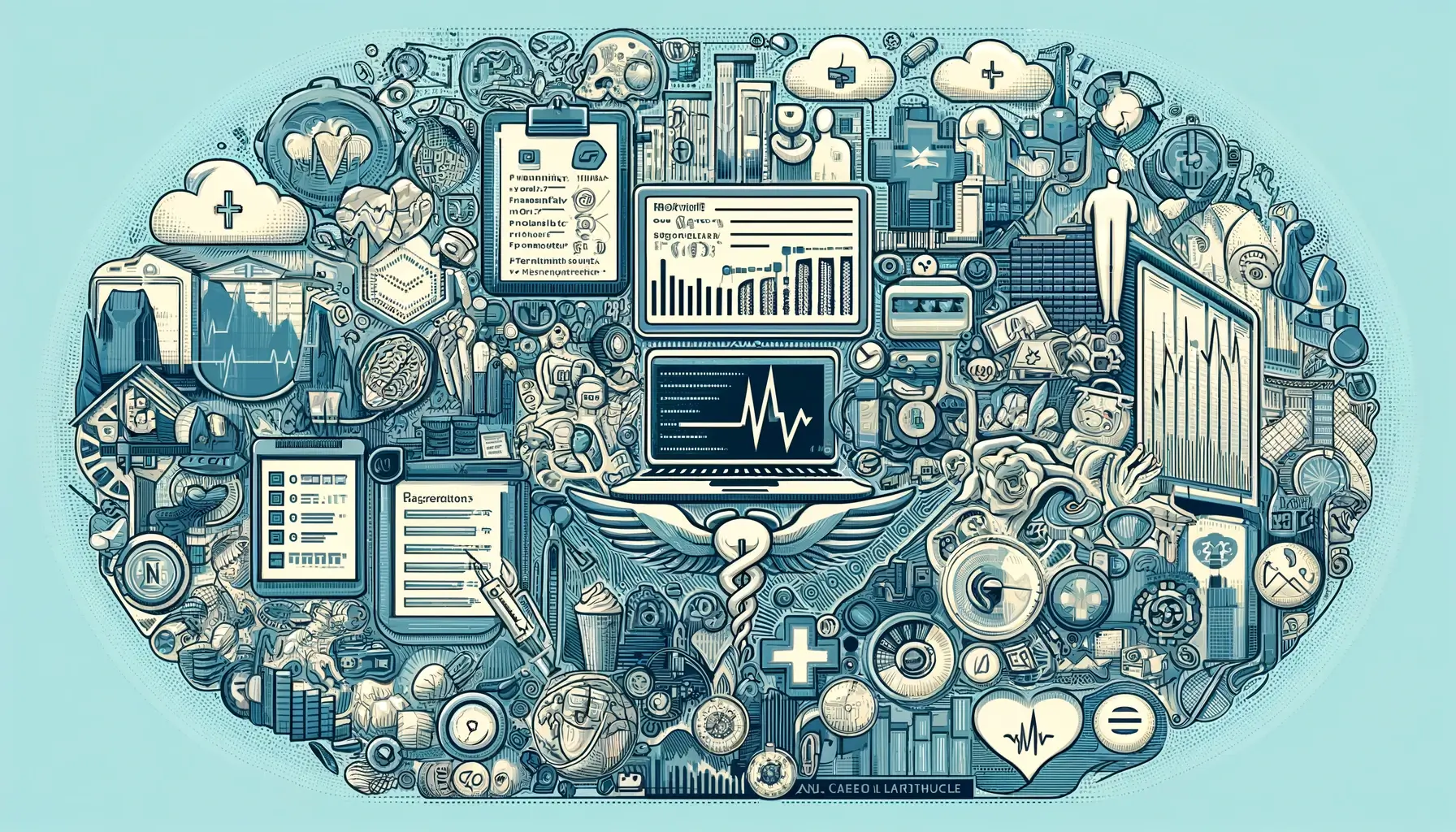
Programming languages in today’s technology tapestry are like threads tying seamlessly interwoven solutions for real-life problems together. Through a series of case studies that underlined versatility and power, we took a look at how different programming languages, through innovative applications, have enabled success to be driven within myriad domains.
Healthcare: Revolutionizing Patient Care with Python
Python, with its powerful ecosystem of libraries and its easy-to-use approach, has placed this language as a flagship in the development of digital health platforms for the healthcare industry. One of them was a system developed to control the records of patients and make it easier for them to set appointments in a large hospital network.
By embedding Python with machine learning algorithms, this system can predict patient influx and optimally schedule appointments so that there are minimized waiting times for patients, which is the time they wait to be seen by the doctor, a factor that features highly in quality patient
Finance: Enhancing Market Analysis with R
One such field is finance, which has always been the field of data analysis and predictive modeling for investment strategies. This advanced market analysis tool was developed using the language R, which is designed for statistical computing and graphics. This tool uses powerful data visualization libraries in R in handling large datasets of market trends and predicting the future movement, hence being of help to the investor to make prudent decisions.
Technology: Developing Next-Gen Applications with Rust
Leading the establishment of a sophisticated encryption tool for a tech startup, the safety- and performance-oriented language played a critical role. The tool ensures that there is an added layer of security, over and above the sensitive data and information, using vulnerabilities.
These are the very reasons because of which Rust could be confidently considered an ideal choice for being used in applications of such great importance, where reliability is of prime concern.
Education: Interactive Learning Platforms with JavaScript
This fact has made the education realm take a paradigm shift, with respect to the fact that the learning environment is now moving to a digital platform. One of the leading projects in this domain developed an interactive learning platform for writing code using JavaScript. An interactive platform to learn to code, providing real-time feedback through gamified tutorials and fun projects using programming languages such as JavaScript and its frameworks. Be it its ubiquity or a rich ecosystem of frameworks, it’s only appropriate for JavaScript to be used in making a resource on how to build educational and fun dynamic web applications.
Sustainability: Promoting Green Energy with Python
There has been a quest for sustainability, where Python is used in optimizing the distribution of wind energy. It gives an opportunity for wind energy to be distributed proportional to areas that need more wind energy, hence, depending less on non-renewable energies, by analyzing weather data and the pattern of using energy. Such flexibilities of Python, with the ability to handle the big scientific computing libraries that hold many packages, have proved very important in the computation of big data sets and modeling of energy distribution networks.
These case studies underscore the opportunity to transform programming languages to solve different ranges of problems in very diverse industries. This means the organization has a benefit to use one of the powerful languages like Python, R, Rust, or JavaScript in order to innovate and develop solutions that can bring about progress and quality into human life.
DM WebSoft LLP, as a technology solution provider, actually lives this innovation through the following: taking all the new programming languages to be able to offer tailor-made solutions that fit best in their clients’ problems, hence contributing to a larger narrative of technological advancement.
Market Research Insights

With a better handle on the pulse of the programming languages market, the ever-evolving sphere of software development can provide invaluable insight into the shifting landscape of technology and employment. Through meticulous market research, one gets a mine of data that gives insight into which programming language is popular, demanded, and holds a good future, which way is serving as a complete view of the currents and undercurrents in the industry.
Popularity and Usage Trends Recent surveys and analysis create a fascinating tapestry of popularity of programming language. Reasons: one, JavaScript is still surfacing at the top—not just the most used, but also as the lingua franca of web development, owing to its critical role in building interactive, dynamic web applications.
And Python is still in line, celebrated for its simplicity and flexibility, which makes it a favorite language for many, from data scientists to AI researchers and software developers. On the other hand, languages such as Java or C# cannot be undermined since the first offers a powerhouse of leadership within enterprise environments and some of the most scalable frameworks and features.
Emerging Languages on the Rise The market, however, is governed by established languages: Java, Kotlin, C, C++, Objective-C, and Swift. However, emerging into this market are the emerging languages. Kotlin, Rust, and Go are three of the most widely spoken of today. Kotlin, with its breathing syntax and compatibility with Java, has developed into a language for Android app development approved by Google.
With its invaluable, utmost memory safety features, Rust—the new darling for system-level programming—has taken the scene. Go, of course, stands best for its simplicity and efficiency in cloud and network services.
Demand in the Job Market
A development that is evidently reflecting in the job market—demand for programmers of Python, JavaScript, Java—keeps increasing. As data analytics and machine learning continue to grow, most of the demand comes from Python professionals. In the meantime, knowledge of newer languages such as Kotlin or Swift is becoming more and more useful in the mobile development industry, pointing to an increased preference for modern languages.
Future Prospects and Industry Needs
In the future, it is most likely that programming will be brought in conjunction with the likes of artificial intelligence, quantum computing, and blockchain, all redefining demand. Very likely, leading languages are going to be the ones that can interface with such technologies at a high level of ease and efficiency.
Second, the increased attention to cybersecurity strongly drives the need for languages that inherently have secure coding practices.
Implications for Businesses and Developers
For businesses such as DM WebSoft LLP, such insights play an instrumentative role in navigating through the evolution in technologies, so that the solutions they build are over the latest and futuristic technologies. It is important for developers to be up-to-date with the existing trends that guide their career paths to languages that need to be learned and mastered, which are the most demanding and promising in the future.
Taken together, the programming language landscape is a diverse reflection of larger technological, economic, and social shifts. For example, understanding the market research offering such insights equips companies and professionals to make calculated decisions in their strategies based on the trajectory of technological progress and market demands, which provide for continued relevance and success in the digital age.
Conclusion
In short, our journey has evinced anything but a linear narrative in the evolution of programming languages. It is a treasure trove of innovation, challenge, and a never-ending chase to find better and more efficient ways of communicating with machines. Each development from those primitive codes of yesteryears that characterized the dawn of the computing age to the very latest sophisticated languages in use today has merely been a sort of stepping-stone in making software development available, efficient, and in keeping with the constantly growing and expanding fringes of technology.
Recent trends in programming languages provide diversity in their performance and the best developer experience, such as in the case of web development, data science, and system programming among others. Quantum computing, AI-driven programming, and programming languages designed for distributed systems all create a new, exciting canvas for possibilities, challenges, and opportunities to innovate in the future.
The next-generation of programming languages, against inclination, runs toward security, domain specificity, and integration with state-of-the-art technologies—all offering a view into the future of a world where programming is not an act of only writing code. It builds solutions that are not only intrinsically secure, efficient, and in harmony with the technologies defining our digital age but also at scale.
Case studies from real life—in the field of health, from the section of finance to education and sustainability—all prove the revolutionary power of programming languages. The stories bear the testament to how bright a developer is and, at the same time, how flexible the programming languages are in problem-solving and hence keep advancing.
Market research insights really act as an eye-opener in this software space, shedding light on those languages that are now getting popular and will have continued growth in the future. Businesses and developers consider this priceless intelligence above strategic alignment to trends and requirements in the market.
In this dynamic ecosystem, companies like DM WebSoft LLP play a pivotal role. Remaining at the advanced side of trends in programming languages and harnessing the powers of emerging languages, DM WebSoft LLP is not only one of the participants of the technological revolution but an innovating player. Their dedication to cutting-edge programming languages ensures that the solutions are effective and further bring long-lasting, future-proof capabilities of the challenges and opportunities ready for organizations in a digital future.
Moving ahead, programming languages will keep on being a barometer for technological advancement, reflecting our aspirations, and challenging our challenges to keep chugging along the line of possibilities. The journey of the programming languages is a testimony to human creativity and resilience that seems to have absolutely no boundaries—just like the technology it accompanies.
Programming languages have been developed from low-level ones, such as machine and assembly languages, to high-level, sophisticated ones intended for some specific applications. Such development has become reflective of the many advancements in technology and the growing complexity of the needs to be solved by computing so that it becomes generally more user-friendly, versatile, and efficient.
The present trends include the rise of interpreted and scripting languages such as Python and JavaScript; focus on performance with languages like Rust and Go; and increasing adoptions of cross-platform development tools and functions.
Those few others are quantum computing, natural language programming, and AI-guided coding that promise to set directions for programming languages in the foreseeable future.
Next-gen programming languages are those which aim to serve modern computing, such as quantum computing, AI integration, and domain-specific applications. Next-gen programming language is a secure and efficient next-generation programming language, focused on the security, efficiency, and productivity of the developer.
This has been done to be able to shed further light on the popularity of programming languages, demand for the language, and future of the programming language so as it guides stakeholders in business and developers alike to make informed decisions on the adoption of languages or learning of languages based on industry needs or popular trends.
Get Started Now !
What’s the Process ?
Request a Call
Consultation Meeting
Crafting a Tailored Proposal
Get Started Now !
Real Stories, Real Results. Discover What Our Clients Say

Working with DM WebSoft LLP was a game-changer for our business. Their technical prowess and innovative solutions transformed our online presence. A highly recommended web development agency with a stellar track record.

We are thrilled with the results DM WebSoft LLP delivered. Their deep understanding of web development coupled with years of expertise ensured a seamless and visually stunning website. True professionals!

In a digital age where first impressions matter, DM WebSoft LLP crafted a website that speaks volumes. The team’s attention to detail and commitment to quality set them apart. Thank you for making our vision a reality.

DM WebSoft LLP’s team demonstrated unparalleled expertise. Their ability to navigate complex technical challenges with ease is truly commendable. Choosing them for our web development needs was the best decision.

Exceptional service, unmatched skills! DM WebSoft LLP stands out as a leading web development agency. Their collaborative approach and commitment to excellence make them our go-to partner for all things web-related.

DM WebSoft LLP turned our ideas into a digital masterpiece. The seamless communication and timely delivery of our project showcased their professionalism. Highly impressed with the level of creativity and skill.

Our experience with DM WebSoft LLP was nothing short of amazing. From concept to execution, their team provided top-notch web development services. A reliable partner for businesses looking to elevate their online presence.

DM WebSoft LLP’s team of tech experts is second to none. Their wealth of experience reflects in the quality of their work. Our website not only meets but exceeds industry standards, thanks to their dedication.

Choosing DM WebSoft LLP was the best investment for our web development needs. Their team’s proficiency, coupled with a customer-centric approach, made the entire process smooth and enjoyable. A pleasure to work with!


